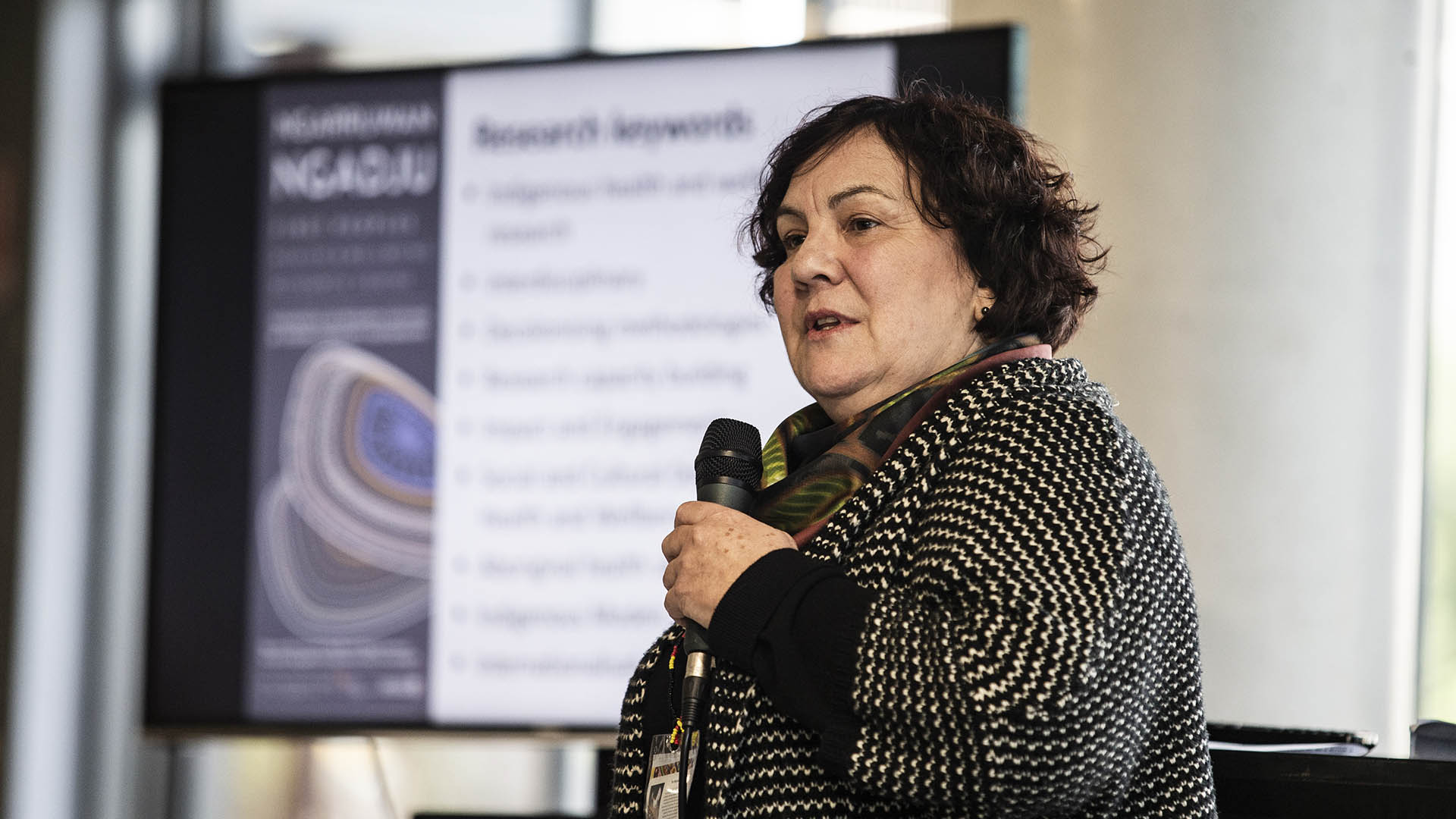July 26, 2022
Illawarra Aboriginal students see the way and re-engage with education
New report finds culturally based program a success
An Illawarra-based program has been making a difference to the lives of Aboriginal students since it began in 2018.
Evidence shows that Aboriginal high school students are suspended in numbers disproportionate to enrolment numbers. The Ngaramura ‘See the Way’ Program identifies students at risk of suspension and supports them to re-engage with education by connecting them with culture.
The Ngarruwan Ngadju First Peoples Health and Wellbeing Research Centre at the University of Wollongong and the Coomaditchie United Aboriginal Corporation deemed the program a success at the launch of the final Evaluation Report of the Ngaramura Program on Tuesday 19 July 2022.
Speaking at the launch event, Ngarruwan Ngadju Director Professor Kathleen Clapham said the program had a positive impact on young people by helping them experience school differently.
“In NSW schools, Aboriginal young people experience the impacts of suspension at a disproportionate rate. They represent 8 per cent of all student enrolments, but make up 25 per cent of all long and short suspensions,” Professor Clapham said.
“The Coomaditchie team have created an inspirational program to help young Aboriginal people connect with their culture and experience school more positively.
“This means students are re-engaging with education and have a greater sense of pride, belonging and self-worth.”
Five local high schools participated in Ngaramura over the three-year evaluation period from 2018 to 2020. A total of 87 students from years 7 to 12 were involved in the program, which was run out of Coomaditchie Hall in Kemblawarra.
Ngaramura is a Dharawal word meaning “See the Way”. Four key concepts underly the program:
- Reconnecting to education through culture and identity
- Culturally safe spaces for young people to learn and thrive
- Cultural continuity through young people
- Elders as holders of Indigenous cultural knowledge and history
Young people engage with Ngaramura in different ways and each student is treated individually. Different activities are run through the program, including painting workshops, cooking sessions, literacy programs, physical activity sessions, cultural and community events. Elders play an important role in the Ngaramura by giving young people access to Indigenous knowledge, skills and cultural and environmental resources.
School attendance and engagement were one indicator used to measure the success of the program. Ngaramura’s target was to assist 25 young Aboriginal people each year. Ninety-two per cent of students regularly attended Ngaramura and 80 per cent participated in formal education and training in 2018. The following year the number of young people who regularly attended the program jumped to 100 per cent and 92 per cent undertook education or training. In 2020 impacts of COVID-19 and lockdowns saw 82 per cent of students regularly participate in Ngaramura and 82 per cent attend formal education or training.
Despite COVID-19 lockdowns impacting the in-person delivery of the program, the transition to an online format still worked and young people remained engaged. Professor Clapham said qualitative data also revealed the program was responsible for keeping students in school, with several participants saying Ngaramura helped them do homework, communicate with teachers and complete assignments.
“Our evaluation found very clear evidence of the impact of this experience on young people,” Professor Clapham said.
“Our yarns with students demonstrated the program’s success and many said they wouldn’t have been able to get through school, or complete year 10 or year 12 without it.”
The final Evaluation Report presents the results of the Ngaramura program, provides insights into its effectiveness, and makes recommendations for the program’s improvement.
Professor Clapham said the report highlights the ongoing need to address the educational disadvantage of Indigenous children and young people in the community.
“Ngaramura is an innovative program that values and respects culture to support Indigenous young people to thrive and reach their potential,” Professor Clapham said.
“The Coomaditchie team provide place-based cultural input, with local Indigenous knowledge from respected Elders who know local families, communities and services and are experts in local Indigenous history.”
Schools who participated in the program reported increased retention of Indigenous students, increased school attendance and greater cooperation. One teacher, cited in the report, said that Ngaramura “has a positive influence on kids’ lives” and, through the program they “see the purpose of school”, they said.
Parents were also given access to a Family Support Worker, referral pathways, transport assistance and access to resources to help overcome barriers in supporting their child’s success at school.
“The Ngaramura evaluation clearly shows alternative culturally based suspension programs are important to improve the school environment for our young Indigenous students in the Illawarra, and more broadly across Australia,” Professor Clapham said.
The program is funded by the National Indigenous Australians Agency.
